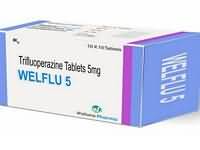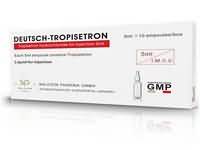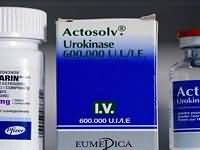Tinidazole

CLINICAL USE
Antibacterial agentDOSE IN NORMAL RENAL FUNCTION
1–2 g dailyPHARMACOKINETICS
DOSE IN RENAL IMPAIRMENT
GFR (mL/MIN)
DOSE IN PATIENTS UNDERGOING RENAL REPLACEMENT THERAPIES
IMPORTANT DRUG INTERACTIONS
Potentially hazardous interactions with other drugsADMINISTRATION
Reconstition
–Route
OralRate of Administration
–Comments
–OTHER INFORMATION
Dosage adjustment in renal failure is not necessary as a decrease in renal clearance is compensated for by increased faecal excretion of tinidazole 43% can be removed during a 6 hour haemodialysis session. .
See how to identify renal failure stages according to GFR calculation
See how to diagnose irreversible renal disease
Home








